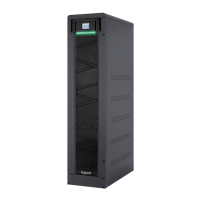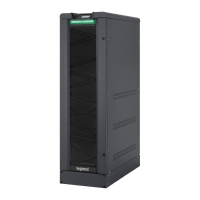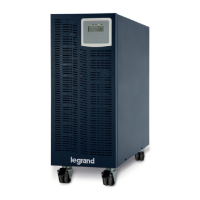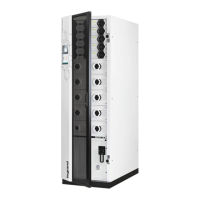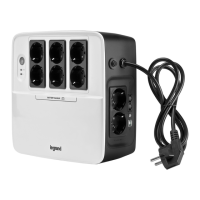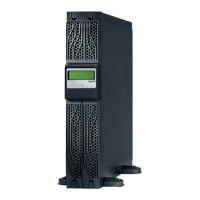
Do you have a question about the LEGRAND KEOR T EVO 10-60 KVA and is the answer not in the manual?
| Power Rating | 10-60 KVA |
|---|---|
| Topology | Double Conversion Online |
| Protection Level | IP20 |
| Form Factor | Tower |
| Efficiency | Up to 96% |
| Input Voltage | 380/400/415 V |
| Output Voltage | 380/400/415 V |
| Frequency | 50/60 Hz |
| Battery Type | Lead Acid / Lithium-ion |
| Technology | IGBT |
| Communication Interface | RS232, USB, SNMP |
| Operating Temperature | 0°C to 40°C |
| Humidity | 0 to 95% (non-condensing) |
Provides a general introduction to the KEOR T EVO UPS and its features.
Explains the manual's objective and intended audience for safe operation.
Details the conditions and coverage of the product warranty.
Outlines conditions under which the warranty does not apply.
Explains safety symbols and specifies required personal protective equipment.
Highlights crucial safety instructions for UPS installation and handling.
Provides critical safety information related to battery handling and installation.
Offers general guidance for emergency situations and fire prevention.
Describes the UPS operation when connected to the mains and providing stable power.
Explains UPS operation when drawing power from batteries due to mains failure.
Details UPS operation when loads are supplied directly from the mains voltage.
Covers Eco, No Operation, Maintenance Bypass, and External Maintenance Bypass modes.
Provides instructions for safely transporting and installing the UPS unit.
Outlines storage conditions and electrical specifications for installation.
Lists available UPS models and their physical dimensions and weights.
Provides step-by-step instructions for safely unpacking the UPS.
Covers general procedures and safety precautions for UPS installation.
Details wiring and connection procedures for single UPS power inputs and outputs.
Details procedures for connecting multiple UPS units in parallel.
Introduces the front panel's main segments: Graphical Control Panel and Status LED Bar.
Explains the energy flow diagrams and operation mode indicators on the LCD.
Details the meaning of the status indicator LED bar on the front panel.
Guides users through accessing the UPS menus for configuration and information.
Explains how to connect the UPS via RS232 for monitoring and control.
Describes connecting ESD, Generator, and Dry Contacts for remote control and alarms.
Details RS485 communication using MODBUS protocol for industrial automation.
Outlines steps for UPS preparation, commissioning, and startup.
Provides instructions for safely shutting down and disconnecting the UPS.
Details procedures for transferring loads to and from the maintenance bypass.
Explains parallel UPS configurations for increased power or redundancy.
Details the steps for commissioning multiple UPS units in parallel.
Explains how to safely decommission parallel UPS systems.
Guides users through diagnosing and resolving common UPS alarms and issues.
Details battery maintenance, checking, and replacement procedures.
Provides instructions for replacing battery fuses.
Details preventive maintenance for fans and capacitors.
